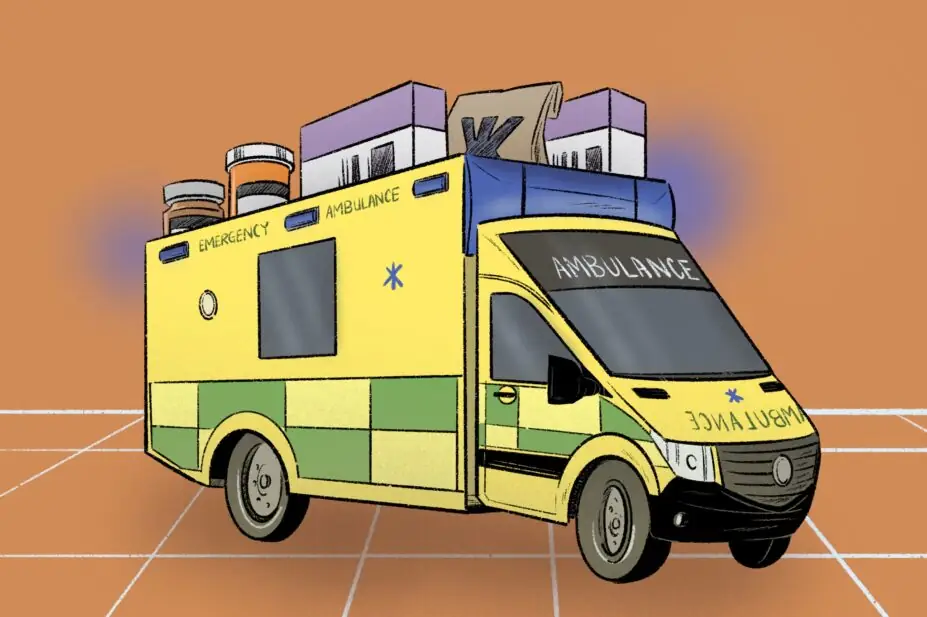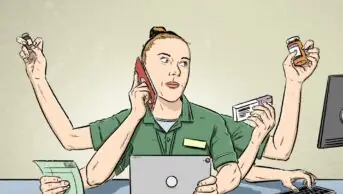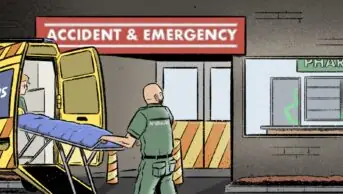
Wes Mountain/The Pharmaceutical Journal
When I joined London Ambulance Service in 2017 as the first full-time chief pharmacist for the London Ambulance Service NHS Trust, it was clear some changes were needed.
Managing drugs at an ambulance service brings huge additional challenges compared with managing medicines in community pharmacies, GPs and hospitals with their more static, geographically-concentrated and temperature-controlled environments.
Systems and processes for managing the various stages in a medicine’s journey at a hospital or pharmacy are not easily translatable into the ambulance sector and many had to be built from scratch.
This is why, working with the team, we spearheaded the award-winning ‘Medicines modernisation programme’ to transform the way drugs are stored, tracked and accessed by our healthcare professionals.
Ambulance crews are a very mobile workforce. Each day our clinicians are covering 650 square miles across London in more than 600 ambulances, response cars, motorbikes, bicycles and other support vehicles, caring for a population of nearly 9 million people.
The service is one of the busiest in the world, with 300,000 medicines per year administered or supplied by our crews in unpredictable, often chaotic and dangerous environments. For example, London Ambulance staff could be treating a patient trapped under a train on the London Underground, people involved in a traumatic road traffic collision, or attending to a group of patients involved in a chemical incident.
Streamlining
We take the regulation of medicines incredibly seriously, not least because the pharmaceutical industry is one of the most highly regulated industries in the world and we have to work with applying all this into this unpredictable environment. The medicine modernisation programme has streamlined how our drugs are stored and tracked from palette to patient across the organisation.
We overhauled our main medicines packing unit, created a new pharmacy team, ensuring that the function itself aligned with regulatory standards
The programme was phased across several years, broken down into a series of projects related to estates, team structure, training, track and trace, and automated temperature monitoring. We overhauled our main medicines packing unit, created a new pharmacy team, ensuring that the function itself aligned with regulatory standards. The facility is staffed by the largest pharmaceutical team of any ambulance service in the country and we also introduced secure drug rooms at all 63 of our ambulance stations.
One of the most groundbreaking benefits of all this work is the ability for us to embark on the cross-sector preregistration trainee pharmacy technician programme in collaboration with a London hospital, and one of our own team who joined as an assistant technical officer initially will become a General Pharmaceutical Council registrant in 2025.
From a governance perspective, we have pioneered the track and trace of medicines in the organisation. The batch number and expiry of all our medicines are receipted and recorded when packed at the medicines packing unit. These are then receipted into all our ambulance stations and onwards to the frontline where the same details are recorded upon patient administration.
As such, we have full details of the medicines journey — regardless of where in London our crews have administered the medicine to the patient. And, in the event of a regulator-led medicines recall, we are able to recall the affected medicines quickly and accurately.
By getting the basics of medicines governance right, our staff from board to front-line have a much better understanding of medicine management. This includes not just how medicines must be handled but also why the systems work in the way that they do. This shared knowledge has been critical in securing buy-in for the work and delivering the programme correctly so that change can be sustained.
Prescribing
Having expert pharmacy professionals in the organisation has meant that we have also been able to pilot prescribing medicines in the 999 setting for advanced paramedics in urgent care. We are one of the few that actually do this and some of our advanced paramedics are already prescribing as part of the trial.
Clinicians working in the 999 setting will be able to prescribe medication at a patient’s home and send this to a community pharmacy down the road, which the patient can collect without having to go to A&E or an urgent care centre. It will help close that loop in the healthcare system and our specialist clinicians are well equipped for prescribing medicines.
With other ambulance services across England looking to emulate how we manage medicine at London Ambulance Service, I am hoping the pharmacy workforce can help the wider urgent and emergency care system and the paramedic profession. This will enable them to develop the skills they need to provide cutting-edge, more definitive care for patients on scene and within the community while avoiding the need to take them to hospital.
Sumithra Maheswaran, chief pharmacist, London Ambulance Service
- This article was amended on 14 March 2024 to correct that the London Ambulance Service covers 650 square miles, not 650 square metres


